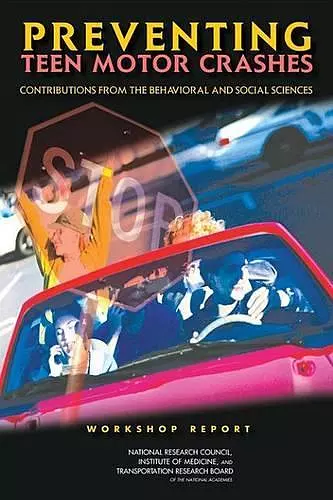Preventing Teen Motor Crashes
Contributions from the Behavioral and Social Sciences: Workshop Report
National Research Council author Institute of Medicine author Division of Behavioral and Social Sciences and Education author Board on Children, Youth, and Families author Transportation Research Board author Program Committee for a Workshop on Contributions from the Behavioral and Social Sciences in Reducing and Preventing Teen Motor Crashes author
Format:Paperback
Publisher:National Academies Press
Published:23rd Feb '07
Should be back in stock very soon

From a public health perspective, motor vehicle crashes are among the most serious problems facing teenagers. Even after more than six months of being licensed to drive alone, teens are two to three times more likely to be in a fatal crash than are the more experienced drivers. Crash rates are significantly higher for male drivers, and young people in the United States are at greater risk of dying or being injured in an automobile than their peers around the world. In fact, in 2003 motor vehicle crashes was the leading cause of death for youth ages 16-20 in the United States.
Understanding how and why teen motor vehicle crashes happen is key to developing countermeasures to reduce their number. Applying this understanding to the development of prevention strategies holds significant promise for improving safety but many of these efforts are thwarted by a lack of evidence as to which prevention strategies are most effective. Preventing Teen Motor Crashes presents data from a multidisciplinary group that shared information on emerging technology for studying, monitoring, and controlling driving behavior. The book provides an overview of the factual information that was presented, as well as the insights that emerged about the role researchers can play in reducing and preventing teen motor crashes.
- Front Matter
- 1 Introduction: A Critical Public Health Problem
- 2 The Anatomy of Crashes Involving Young Drivers
- 3 Characteristics of Adolescence That Can Affect Driving
- 4 Strategies to Improve Safety
- 5 Moving Forward
- References
- Appendix: Workshop Agenda and Participants <
ISBN: 9780309104012
Dimensions: unknown
Weight: unknown
76 pages